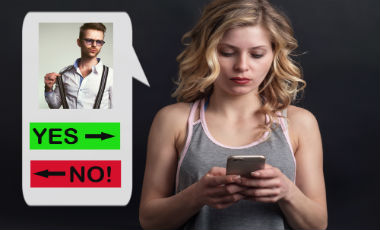No, this is not about catching your employees as they surf dating sites on company time.
It is about engaging and cultivating your workforce with the recognition that one size does not fit all.
That understanding is at the heart of the adaptive (also known as personality-based) strategy of engaging your workforce. Kind of like dating apps, adaptive technology automatically maps out an individual’s “persona” – based, say, on performance metrics, personality and preferences – and uses that to identify which workforce tools and techniques would suit them best. It is a sophisticated bit of “matchmaking” that rapidly improves employee engagement and empowerment across the workforce experience, from incentives and gamification to scheduling, training, and more.
One of the most important and interesting areas in which to use the adaptive approach is interpersonal interactions. We’ll take a look at three examples, increasing in complexity, of how the flow and effectiveness of such interactions might be affected: supervisor to employee; employee to employee; and employee to customer.
Supervisor to Employee: Everybody Learns Differently
Employee coaching plays a key role in any workforce engagement effort, but can often fall prey to the scattergun approach - uniform, reactive training for all employees. With an adaptive persona as a guide, coaching objectives can be made exactingly specific, measurable and attainable, automatically changing in response to incremental performance improvements. Essentially, adaptive coaching transforms sensitivity to your employees’ needs into a feedback loop for meeting strategic business goals.
Let’s look at four basic agent personas (which can always be more granularly defined, of course) and the way in which adaptive coaching might address how each of them learns and responds to rewards.
| PERSONA | ADAPTIVE COACHING |
| The Sociable employee needs to be coached with illustrative stories and requests for their input, but rewarded with private recognition | An example of a system-generated insight for this persona could be: “Check out the customer stories that are likely to improve your CSAT…READ NOW” |
| The Communicative employee learns best through role-playing or on the job, with public praise as an important motivator | An example of a system-generated insight for this persona could be: “Congrats on closing your deal in record time…Your interaction will be added to our Best Practice Library” |
| The Analytic employee learns best by absorbing facts and applying reason, while expecting to be rewarded with increased responsibility | An example of a system-generated insight for this persona could be: “Using these ‘power phrases’ have been proven to increase NPS…Try using these in your next 3 interactions” |
| The Motivator learns from real-world examples and prefers tangible rewards to more ephemeral praise | An example of a system-generated insight for this persona could be: “Check out these great example interactions for how to handle objections effectively…REVIEW NOW” |
Employee to Employee: Resolving a Peer Coaching Conundrum
The insights into various persona and how best they learn can be used to revolutionize a more complex type of coaching that has thus far remained resistant to effective systematization: peer coaching.
Peer coaching is complicated by the necessity of accounting for the needs and characteristics of at least two individuals. With a persona-based adaptive solution, however, you can automatically match the strengths and personality of one employee with the weaknesses and personality of another. At a click, a supervisor could reach out to both employees, providing coaching schedules, supporting material and specific goals – all calibrated to suit each employee’s specific persona.
An adaptive system also tailors the incentives for peer coaching to the personae of those employees asked to share their knowledge, thus increasing the response. And when the peer whom they have coached achieves their goals, the coach can be prompted to recognize and reward that achievement accordingly, much as a supervisor might do, reinforcing their mutual engagement.
Employee to Customer: A Match Made in Real Time
Having defined your employees’ distinctive personas and brought them together for effective training, an adaptive solution could further address the next level of complexity by optimizing call routing.
In order to ensure the best possible matches between a call center agent and multiple customers, you need to combine what you learned about the agent with customer-centered interaction analytics. This multifaceted “Tinder effect” is created by correlating a given customer’s expectations and behavior with a particular agent persona. Based on this analysis, an incoming customer call can be immediately and automatically routed to an agent identified as most likely to generate a positive result in handling the particular customer’s issue.
While the benefits for the customer are clear, adaptive call routing also makes a positive impact on employee engagement. When customer interactions are more likely to be pleasant and to produce successful outcomes, agents feel greater satisfaction with their work. This, in turn, makes them more effective agents as well, creating a self-reinforcing cycle of improved performance.
And the correlation is actually measurable. Temkin Group research in 2017 found that companies leading the field in customer experience also far surpassed their competitors in employee engagement.
Personalized Engagement that Works
So, what is the “secret of dating apps in the workplace”?
It is leveraging automated adaptive analytics to shape your business culture, so your employees get what they need to succeed at every interactive juncture – from supervisor and peer coaching to customer call routing. Because their success means better customer service and cost-effective optimization.
It is using an Adaptive Workforce Optimization solution to treat every employee like an individual, finding matches – both people and technology - that work best for them.
It is helping employees get engaged at work and, if the adaptive “matchmaking” is just right, maybe even outside of work….
Visit our Roadshow to learn first-hand how improving what you do today can directly improve your employee experience (EX) and in turn your customers' experience (CX) now and in the future.



